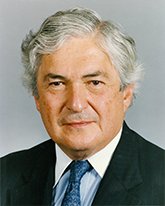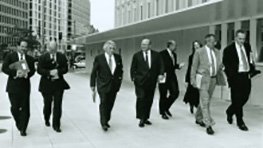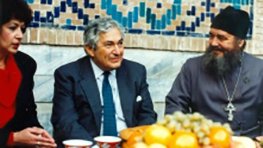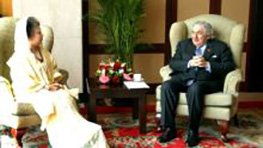9th President of the World Bank Group, June 1, 1995 - May 31, 2005
During his decade as President of the World Bank (June 1, 1995, to May 31, 2005), James D. Wolfensohn focused on the institution’s core purpose: fighting global poverty and helping the world’s poor forge better lives. Under his leadership, the World Bank implemented a range of significant reforms to help achieve its mission and broke new ground in several major areas, including corruption, debt relief, disabilities, the environment and gender.
Personal History
James David Wolfensohn was born on December 1, 1933, in Sydney, Australia, to parents who had emigrated from England. He studied arts (BA) and law (LLB) at the University of Sydney, and after a brief period as a lawyer in Australia, he went to Harvard Business School, graduating in 1959. He then worked for a series of firms and investment banks in Sydney, London and New York before creating his own investment firm, James D. Wolfensohn, Inc., in New York in 1981.
Wolfensohn was on the Australia’s fencing team in the 1956 Olympic Games; later in life he took up playing the cello and mastered it, too. He was the chairman of Carnegie Hall in New York (1980–91) and of the John F. Kennedy Center for the Performing Arts in Washington, D.C. (1990-1995).
In 1980 Wolfensohn became a naturalized U.S. citizen but regained his Australian citizenship in 2010.
Wolfensohn married Elaine Botwinick in November 1961; they had three children.
The Setting
Outside the Bank the situation in 1995 was also difficult. Russia and the countries of Eastern Europe were still struggling for equilibrium following the disintegration of the Soviet Union and the Warsaw Pact, and the Russian ruble had plunged in value. The accumulated debt of poor countries was so great that they were saddled with paying more back on the debts than they were receiving in new loans or aid. War was still raging in the Balkans, and barely six weeks after Wolfensohn assumed the Bank presidency a massacre of some 8000 men and boys took place in Srebrenica, Bosnia. The previous year a genocide had occurred in Rwanda, with at least half a million killed. In the spring of 1995 terrorists launched a nerve gas attack against the Tokyo subway and terrorists bombed a U.S. Federal government building in Oklahoma, in both cases causing deaths and severe injuries.
It was an extremely complex world, inside and outside the Bank that James Wolfensohn inherited. But with his seemingly boundless energy, he plunged in, creating a flood of new initiatives and projects to address the problems he identified.
Debt Relief
• Deeper and broader relief. External debt thresholds were lowered from the original framework to enable more countries to become eligible for debt relief and some countries to become eligible for greater relief.
• Faster relief. A number of creditors began to provide interim debt relief immediately.
• Stronger link between debt relief and poverty reduction. Freed resources were to be used to support poverty reduction strategies through Poverty Reduction Strategy Papers (see below) developed by national governments in consultation with civil society.
In 2003 the Operations Evaluation Department (OED) of the World Bank published a review of the HIPC initiative. It noted that 27 countries were benefitting from significantly lower debt service and concluded that the goal of HIPC—to give a fresh start to the world’s poorest countries and most highly-indebted countries by cutting their external debt to a manageable level—was likely to be achieved if all creditors effectively delivered their full share of debt relief. In his World Bank oral history, recorded after he left the Bank, Wolfensohn said, “Debt relief was one of the most important things that came out in my period in the Bank, because the notion of regularizing the debts of impoverished countries was quite revolutionary.”
Combatting the “Cancer of Corruption”
At his first Annual Meeting as Bank President in 1995, Wolfensohn announced that a major theme of his presidency would be to forge “a new compact between donors, investors, and recipients to ensure that resources are sufficient to meet the needs of the world’s poorest people—and that those resources are used efficiently and transparently.” After a full year as President, Wolfensohn told the 1996 Annual Meeting that the Bank needed to “work on the second part of the compact: to ensure that all resources are used efficiently.” Then, in one of the most famous speeches by a Bank President, using words never spoken by a previous President, he told the delegates, “If the new compact is to succeed, we must tackle the issue of economic and financial efficiency. But we also need to address transparency, accountability, and institutional capacity. And let’s not mince words: we need to deal with the cancer of corruption.” He offered the Bank’s assistance to governments who would implement national programs to discourage corrupt practices.
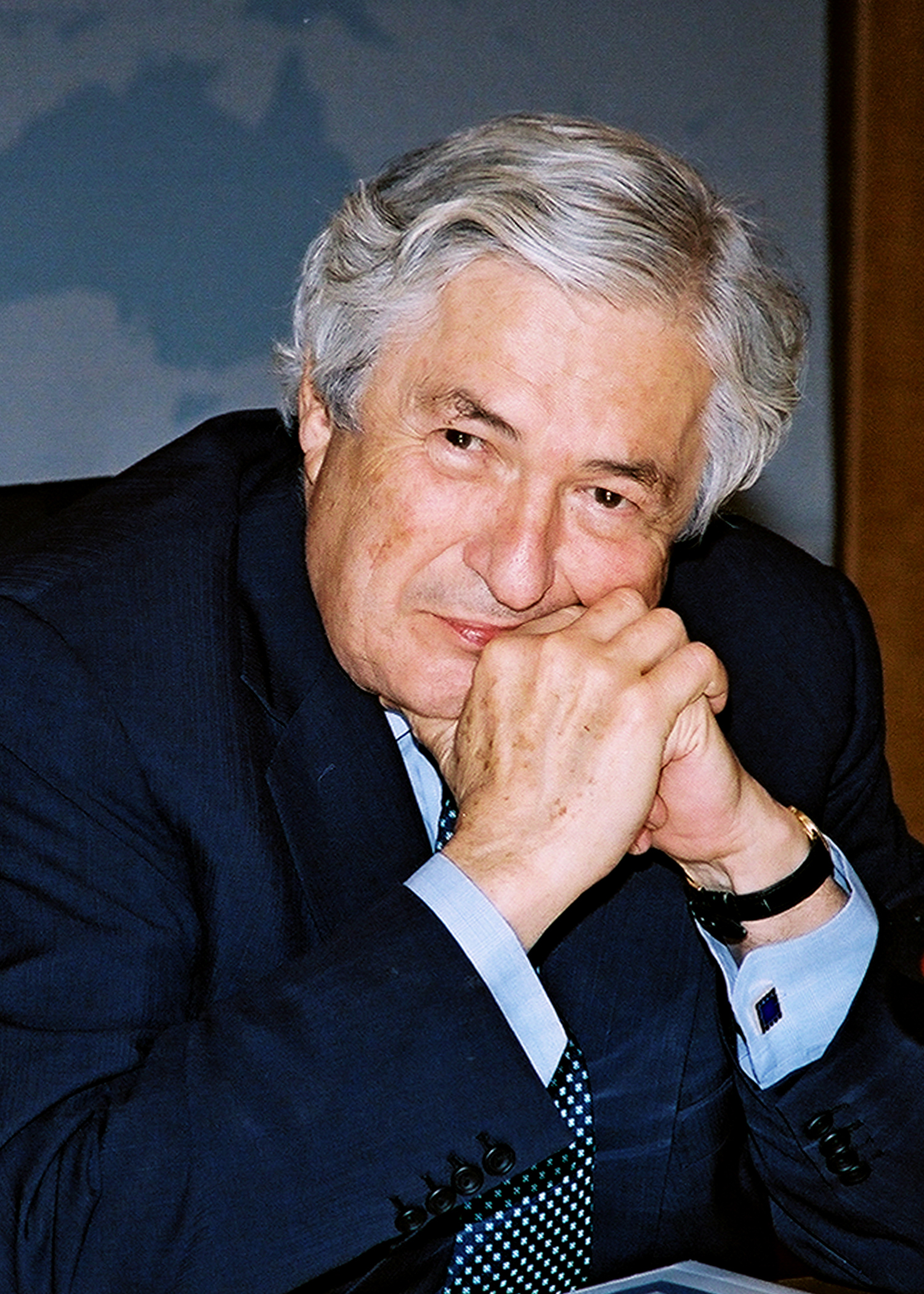
The Board of Executive Directors then formally approved the anti-corruption strategy along four lines: preventing fraud and corruption in Bank projects; helping countries that request Bank assistance against corruption; mainstreaming a concern for corruption into the Bank’s work; and giving active support to international efforts to address corruption. In 1999 Wolfensohn established an Anti-corruption and Fraud Investigation Unit, and the first sanctions cases were decided, with 7 firms and 2 individuals debarred from Bank funded contracts. In 2000 the Bank laid out its approach to improving governance and tackling corruption in a strategy paper, Reforming Public Institutions and Strengthening Governance. Also in 2000 Wolfensohn asked former U.S. Attorney General Richard Thornburgh to head a panel to consider the mechanisms available to the Bank to address fraud and corruption; following the panel’s report, Wolfensohn consolidated the Bank’s investigative responsibility in a new Department of Institutional Integrity, charged with investigating both allegations of fraud and corruption in Bank projects as well as allegations of staff misconduct including, but not limited to, fraud and corruption.
In 2004 the Bank’s internal Operations Evaluation Department reviewed the progress of the anti-corruption measures taken by the Bank since 1997 and concluded, “[t]he Bank has come a long way in a short time,” but warned that “the Bank has demonstrated only modest success so far in achieving durable outcomes.”
Strategic Compact
Unlike his predecessors, Wolfensohn came to the Bank having sought the job of President. And he brought with him some explicit ideas about how the Bank needed to be reformed and reorganized.
The Compact had four main programs: to provide better services to the Bank’s clients by “refueling business activity”; to refocus the development agenda to include greater attention to human development, environment and institutions (including supporting post-conflict reconstruction activities); to provide better knowledge management (both obtaining information and sharing it); and “revamping the organization” (including “speeding up processes, cutting back management layers, and decentralizing functions and responsibilities to the field”).
In 2001 the Bank assessed its progress under the Strategic Compact. It concluded that “the framers of the Compact were essentially correct in their vision and in the formulation of the key tenets of change” and that “the Compact has allowed the Bank to reorient itself in fundamental ways and achieve many of its short term goals.” However, it acknowledged that “organizational and cultural change of such magnitude is nearly always much more difficult and slower in practice than is usually anticipated” and “efficiency gains have been difficult to realize.”
An important part of the Strategic Compact was to “decentralize”; that is, to have more staff members work in more country offices. By the end of the Compact period, OED reported that 29 country directors were located outside Washington, up from 3 in FY97, and “the number of international staff in country offices in the regions has increased by 9% to 276 and the number of local staff by 39% to 1,975, of whom about 40% are professional staff, enhancing the capacity of these offices.” Moreover, the functions carried out in the country offices expanded in “areas such as project supervision, procurement, financial management, and disbursement.” Best of all, said OED, “Decentralization has also led to hard-to-measure but real enhancements in in-country capacity building, partnerships, and country dialogue.”
In a study of the progress toward a Knowledge Bank, another of Wolfensohn’s goals, OED noted that the 1998 World Development Report focused on knowledge for development, in 1999 knowledge management was included in the Bank’s mission statement, the 2000 Strategic Forum identified knowledge sharing as a key action area, and in 2001 the Development Gateway was launched and field offices were linked to the global communications system. Perhaps most significantly, in 1998 “knowledge sharing” became an “indicator in staff Overall Performance Evaluations.” OED concluded, “Overall, the Bank has made more progress in establishing the architecture to support its knowledge initiative than in creating the governance arrangements and work processes for carrying it out.”
Comprehensive Development Framework and Millennium Development Goals
In 1999 Wolfensohn launched the Comprehensive Development Framework (CDF), focusing on the interdependence of four key development principles: a long-term holistic vision of development, country ownership of the development strategy, ensuring that development assistance is a country-led partnership, and a focus on results. In his oral history, he said, “I can truthfully say that I invented the CDF, sitting in my place in Jackson Hole,” but he acknowledged that it was “not a brilliant insight. It sounds obvious, but it was bloody hard to get through.”
The announcement of the CDF was followed by the 1999 Poverty Reduction Strategy of the Bank and the International Monetary Fund, which drew its principles from the CDF and underpinned the HIPC initiative. Low income borrower countries were required to complete a Poverty Reduction Strategy Paper (PRSP) in order to obtain Bank and Fund concessional lending and qualify for HIPC debt relief. Twelve countries were selected as CDF pilot countries, and monitored carefully. In 2003 the Bank supported a “multi-partner evaluation of the Comprehensive Development Framework.” Its key finding was that “there have been improvements in aid delivery process towards better coordination, country ownership and partnerships, but that these improvements have not been systematic nor can they be unambiguously attributed to the introduction of the CDF.” An OED review in 2004 concluded that the “initiative is relevant but its benefit vary” and while it has “improved the poverty focus of national strategies” most country PRSPs “deal primarily with the composition of public expenditure and give inadequate treatment to growth and other poverty-reducing actions.”
The CDF provided a strategy and vehicle for the Bank to implement the United Nation’s Millennium Development Goals (MDG). In September 2000 the UN members committed themselves to eight goals to achieve sustainable development by 2015. The World Bank committed itself as a full partner to achieving the goals, placing the MDGs at the center of its effort to fight poverty. But the MDGs were adopted without an agreement on how to finance them, so an international conference on financing was held in Monterrey, Mexico, in March 2002, with UN members, the World Bank, the International Monetary Fund and the World Trade Organization. The “Monterrey Consensus” that resulted was described by the United Nations as a “landmark framework for global development partnership in which the developed and developing countries agreed to take joint actions for poverty reduction.” It fit completely within Wolfensohn’s vision for comprehensive development.
Focusing on People
Wolfensohn’s omnivorous interests ensured that the Bank would look at new issues and old issues in a new way. His belief that the Bank should serve the people of the world, particularly the poorest of the poor, drove his agenda. The Bank’s 2003 World Development Report on public service delivery set a path-breaking global intellectual agenda, framing service delivery performance problems in terms of accountability gaps and pathways. Conceptually, the report emphasized the principal-agent framework as the most relevant tool for understanding the relationship between citizen voice and public sector response.

The Bank’s original focus on post-World War II reconstruction (the “R” in the International Bank for Reconstruction and Development) came back to life as Wolfensohn pushed for Bank lending to reconstruction in the Balkans after the wars of the 1990s and spurred an increase in IDA allocations for post-conflict countries.
During Wolfensohn’s terms as president, the Bank adopted its first comprehensive strategy for environment and development, launched a fund for reducing greenhouse gas emissions, and adopted a development strategy for sustainable forests. The Bank developed a gender mainstreaming strategy to reduce gender-related barriers to development and poverty reduction. Wolfensohn reached out to heretofore marginalized communities, including people with disabilities, the Roma, and youth. He joined other donors making HIV/AIDs drugs affordable for developing countries. He opened the Bank vigorous dialogue with leaders of faith-based organizations, and he emphasized the importance of culture for strong communities.
Clearly Wolfensohn’s personal energy brought enormous revitalization to Bank programs. But as he reminded his listeners in his last address to the Bank’s Annual Meeting, “If we want stability on our planet, we must fight to end poverty. Since the time of the Bretton Woods Conference, through the Pearson Commission, the Brandt Commission, and the Brundtland Commission, through to statements of our leaders at the 2000 Millennium Assembly—and today—all confirm that the eradication of poverty is central to stability and peace. It is still the challenge of our time.”
Departure
James Wolfensohn left the World Bank on May 31, 2005, only the third person to serve two full terms as president.
